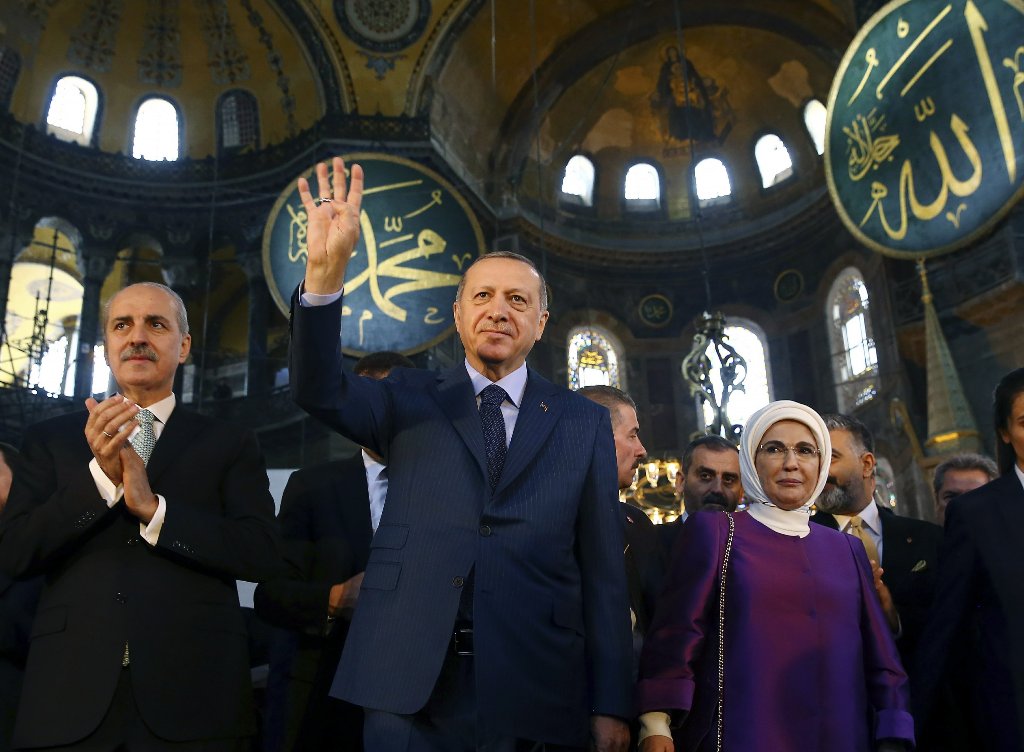The 567th anniversary ceremonies of the Conquest of Istanbul were made with excitement under the shadow of the Coronavirus pandemic. Surah Al-Fath was recited in the Conquest Feast held in the Hagia Sophia. After the Quran recital, President Erdoğan addressed the nation in a speech via video-conference. Starting his speech with the meaning of Surah Al-Fath, Erdoğan said, “The Conquest is not a symbol of destruction, but of construction, not of demolition, but of revival, not of persecution, but of justice, not of contempt, but of virtue, not of hate, but of love”. (https://www.yenisafak.com/ 29/05/2020)
Comment:
Ceremonies are held every year on the occasion of the anniversary of the Conquest of Istanbul. However, the ceremonies held this year were more extensive and remarkable than the previous years. One of the most remarkable aspects of the ceremonies held this year was the recital of the Surah Al-Fath in the Hagia Sophia. However, after that, the debates over converting the Hagia Sophia from a museum to a mosque have begun on the television screens.
Politicians have used the reopening of the Hagia Sophia to worship as a material for themselves since the past years. However, no remarkable result was ensued from any politician until today. Because closing the Hagia Sophia and converting it to a museum was the matter that was fulfilled by Mustafa Kemal with the instructions of the Westerners. Therefore, reopening the Hagia Sophia to worship only as a mosque for all prayer times – as in other mosques – requires a strong political will and also the permission of the colonists.
In these days we are going through, this issue is constantly kept warm and discussed. All opposition, especially the CHP, supported and did not object to this issue brought forward by Erdogan. In fact, Faik Öztrak, the spokesperson of the CHP, said: “Our opinion is clear, if you open it, open it, no one is holding your hand, it just requires one law”. Hence, this time, the British say what the people want to hear, instead of opposing this issue.
On the other hand, President Erdoğan made different statements regarding the issue at different times. On March 24, 2019, he said, “It is not something that will not happen, we even put emphasize on it so that we may name it not as a museum but as the Hagia Sophia Mosque.” “The Quran can be recited and the prayer can be performed in the Hagia Sophia. Only our sacred nation can decide this.” (sabah.com 05/06/2020) On June 9, he said in the live broadcast on the TRT channel, this issue depends on the decision that will be made by the State Council and whatever steps need to be taken after the decision, will be taken accordingly. On June 17, 2020, in the Central Executive Committee (MYK) meeting, he said “I hope we will perform our prayers after the decision to be taken by the State Council on July 2 for Hagia Sophia.”
According to all these statements:
The issue of re-opening the Hagia Sophia to worship is handled by Erdoğan, who always acts with a pragmatist tendency, with an approach that will contribute to him both inside and outside.
- Domestically, the steps will be taken in a way that will gain him or his party a vote in the elections that will be held in 2023 (or earlier).
- Outside, he will be able to use it to deceive the Muslims to run the “proxy wars” imposed by America.
- Also, he uses it as a threat in his relations with European countries.
However, regardless of the situation, the Hagia Sophia is a place of worship of the Muslims and must definitely remain a mosque. With the permission of Allah, when the Rashidun Caliphate State will be established, the Hagia Sophia and similar places will be opened for use as a mosque, regardless of the condemnation of any condemnatory and personal business.
Muhammed Hanefi Yağmur


When I was in Istanbul I found finding a Musjid to pray in very difficult. All the old ottoman Musjids were turned in to Museums, shops and other secular buildings. The functioning mosques tended to be converted small spaces in side allays that have no distinguishing features so were very hard to find.